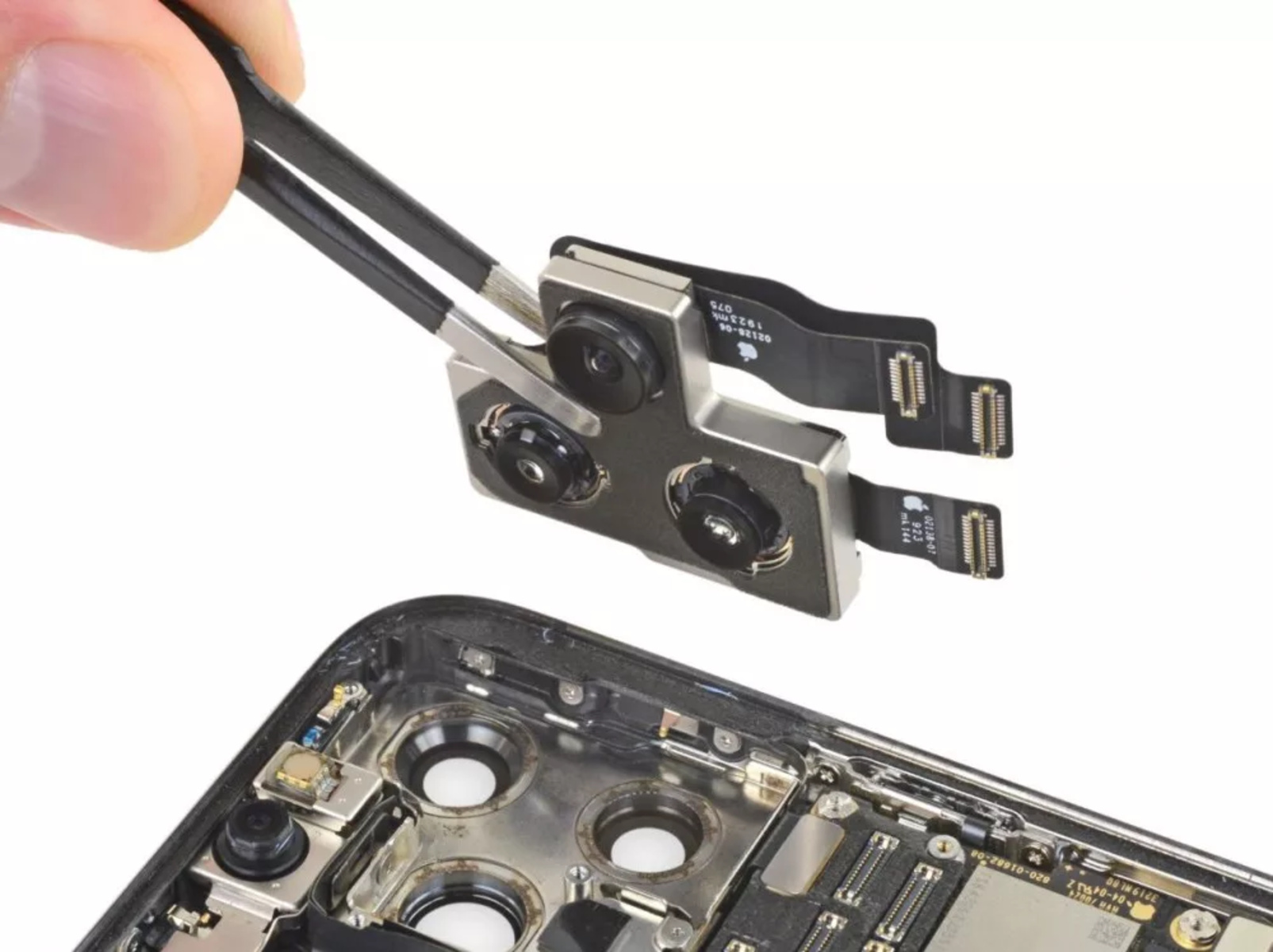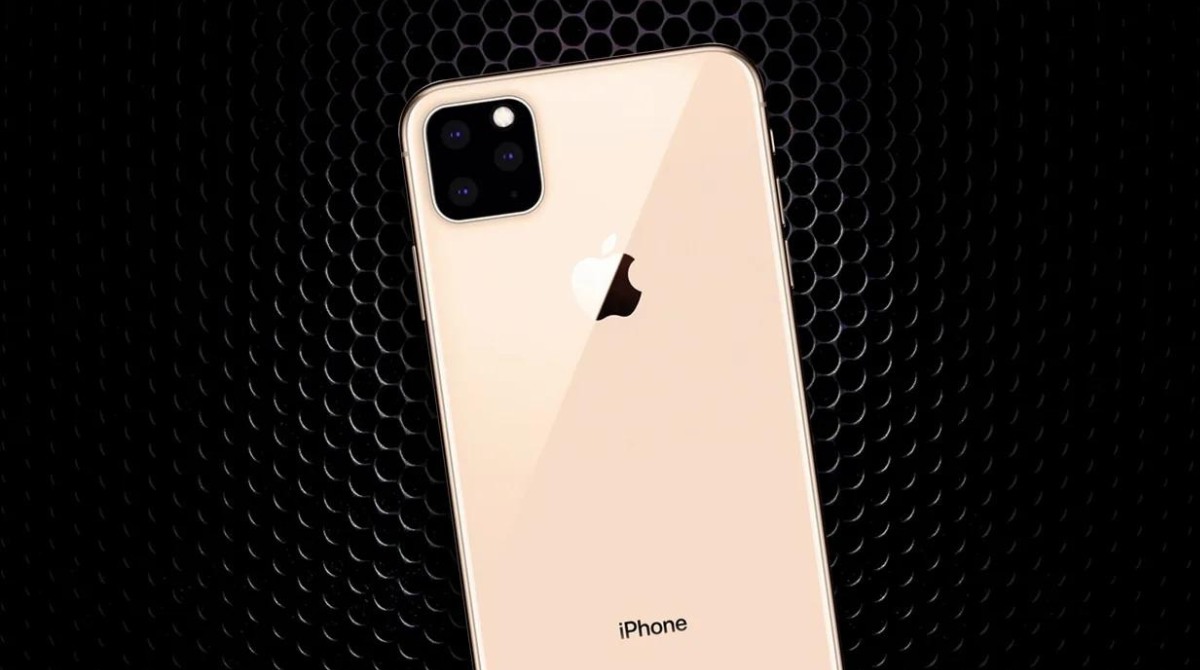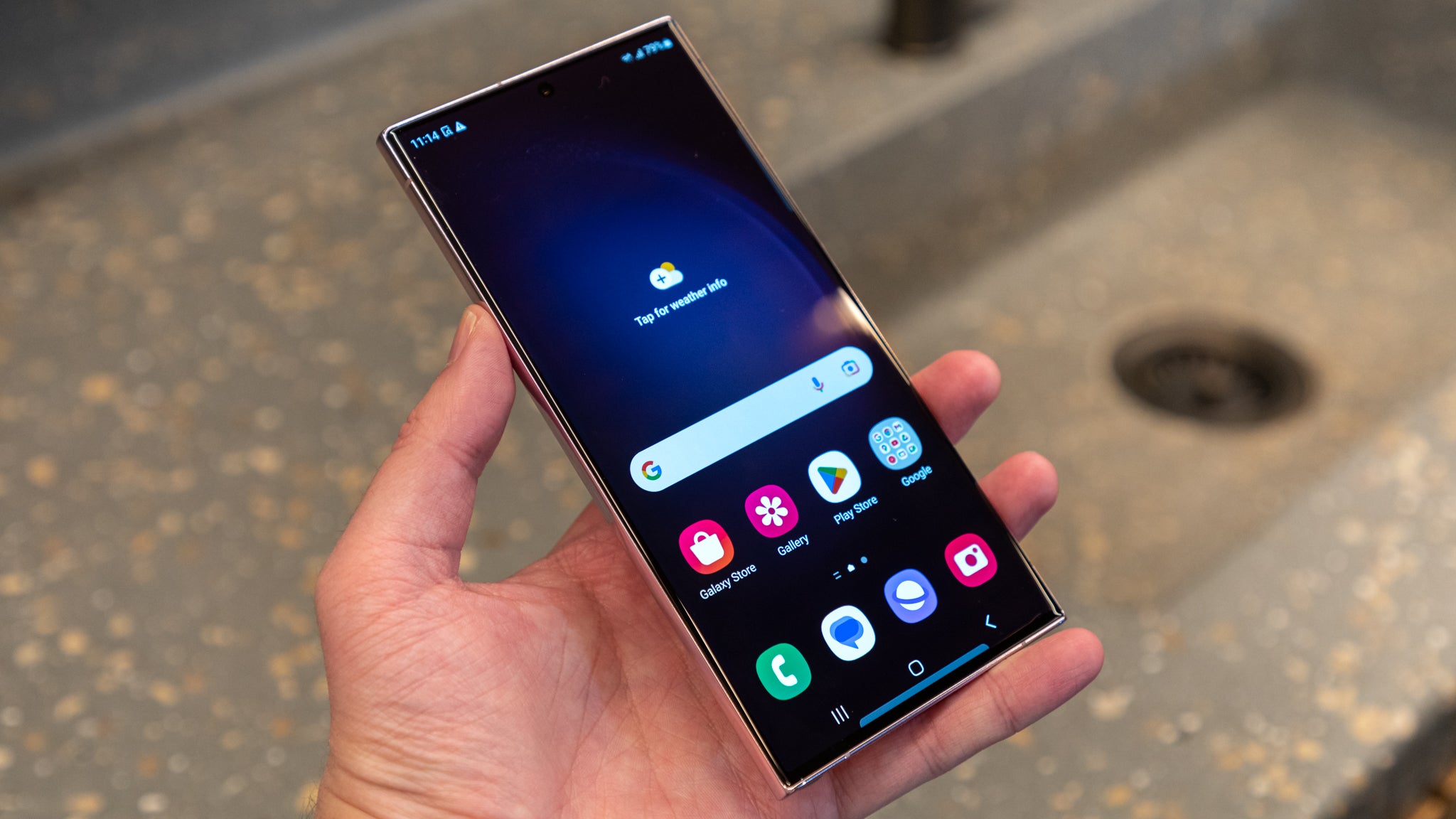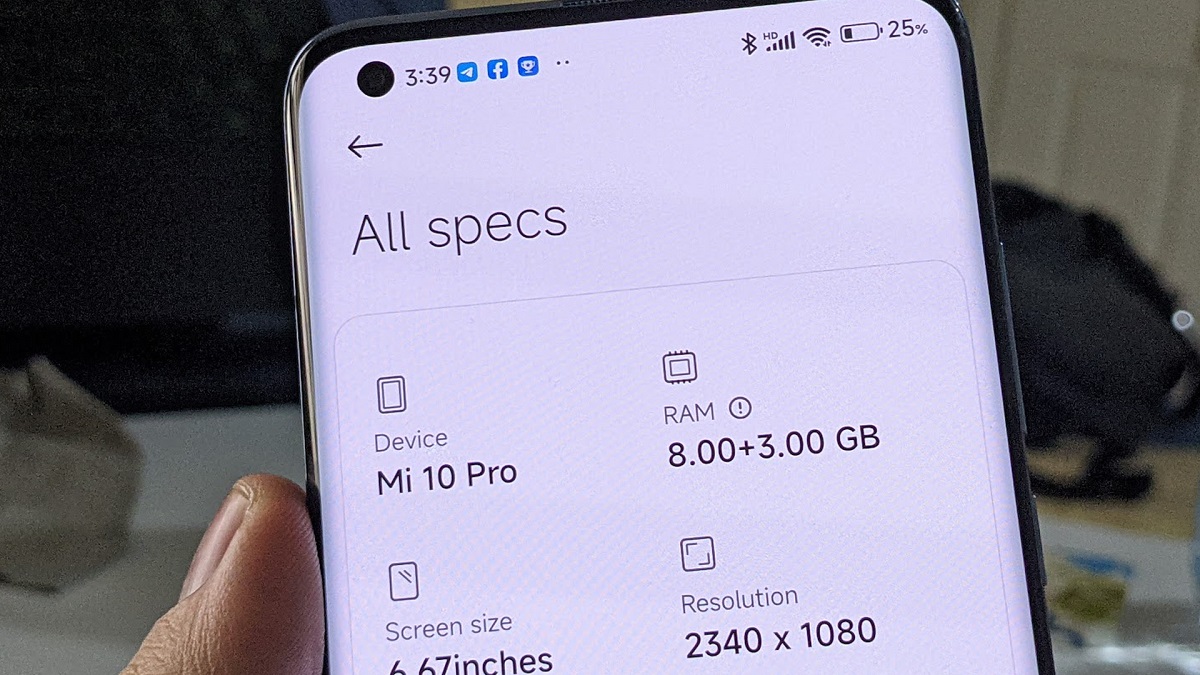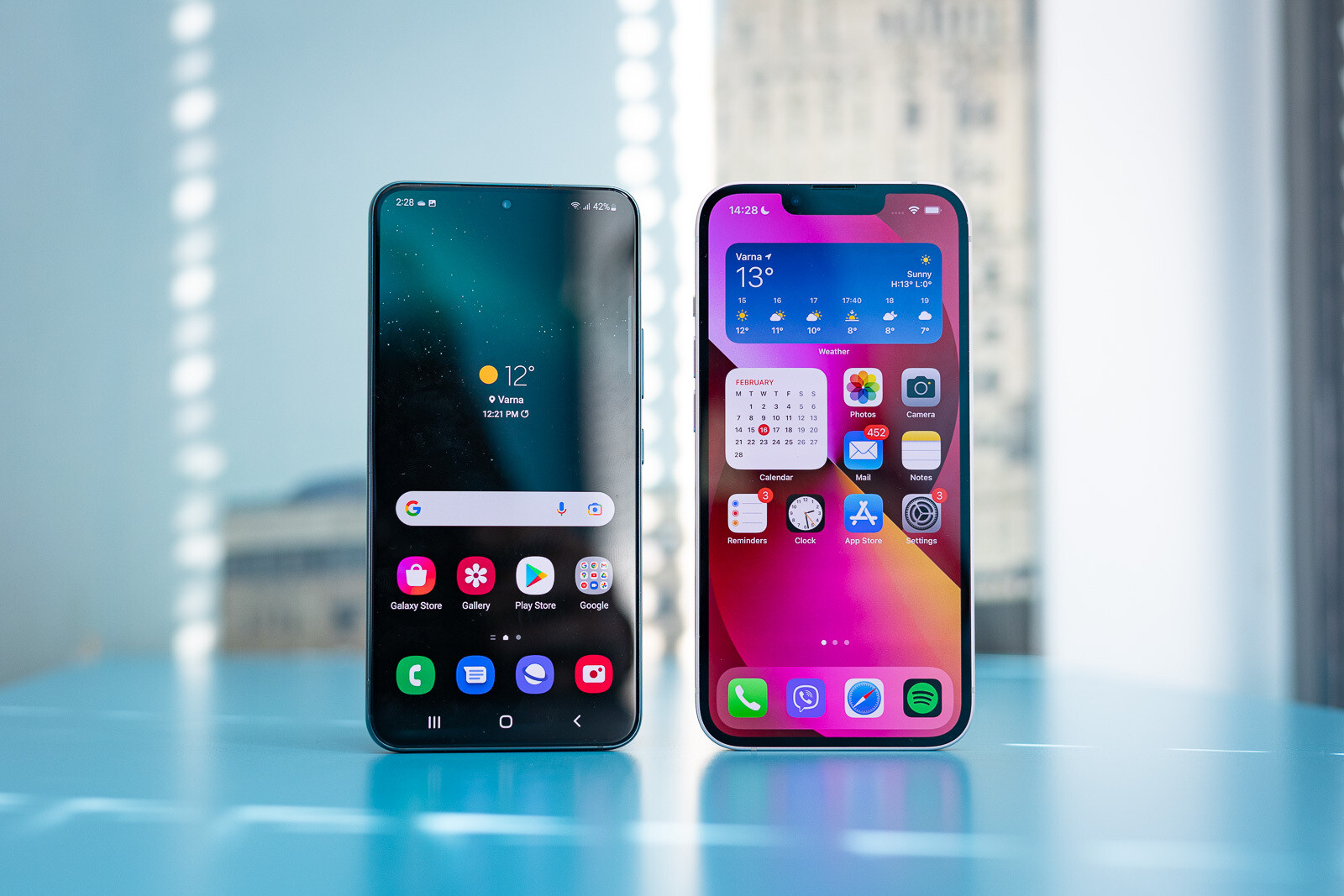Introduction
Welcome to our comprehensive guide on how much RAM the Google Pixel smartphones have. In this article, we will delve into the world of RAM and explore its significance in the smartphone industry. We will then provide you with detailed information regarding the RAM capacity of each generation of Google Pixel devices.
RAM, which stands for Random Access Memory, plays a crucial role in the performance and multitasking capabilities of a smartphone. With the increasing demands of modern applications and the need to run multiple tasks simultaneously, a sufficient amount of RAM is essential for a smooth and efficient user experience.
When it comes to Google Pixel smartphones, understanding the RAM capacity of each device is important for potential buyers who want to evaluate their performance capabilities. The RAM capacity determines how many apps and processes a smartphone can handle at once without experiencing lag or slowdowns.
In the upcoming sections, you will find detailed information about the RAM capacity of Google Pixel smartphones, including the Google Pixel 2, Google Pixel 3, Google Pixel 4, and Google Pixel 5. We will also discuss how much RAM is considered sufficient for optimal performance and address any common misconceptions surrounding RAM capacity.
So, whether you are a tech enthusiast looking to upgrade your smartphone or simply curious about the technical specifications of the Google Pixel devices, this guide is for you!
What is RAM?
RAM, or Random Access Memory, is a crucial component in computing devices, including smartphones. It acts as a temporary storage area for data that is actively being used by the device’s processor. Unlike the device’s internal storage, which stores data even when the device is turned off, RAM is a volatile memory that is cleared when the device is powered down.
Think of RAM as a workspace for your smartphone’s operating system and applications. When you open an app, the required data is loaded into RAM so that it can be quickly accessed by the device’s processor. This allows for smooth multitasking, as the processor can rapidly switch between different apps and processes that are stored in RAM.
The amount of RAM in a smartphone directly affects its multitasking capabilities. With more RAM available, a device can handle a greater number of active apps and processes simultaneously without experiencing slowdowns or crashes. This is especially important for resource-intensive applications, such as video editing, gaming, and running multiple apps at once.
RAM capacity is typically measured in gigabytes (GB), and many smartphones offer options with different RAM configurations. It’s worth noting that RAM does not directly impact the storage capacity of a device. Internal storage is used for long-term data storage, such as photos, videos, and app installations, while RAM is used for short-term data storage and quick access.
Without sufficient RAM, a smartphone may struggle to smoothly run multiple apps or perform demanding tasks. Users may experience lag, delays in app loading times, and overall sluggish performance. On the flip side, having more RAM than necessary may not provide any significant performance benefits unless the user actively engages in demanding tasks.
Now that we have a basic understanding of what RAM is and its role in smartphones, let’s explore the specific RAM capacities of various Google Pixel devices in the following sections.
The Importance of RAM in a Smartphone
RAM plays a critical role in the overall performance and user experience of a smartphone. It is responsible for storing and accessing data that is actively used by the device’s processor. So, why is RAM so important in a smartphone? Let’s explore its significance.
1. Smooth Multitasking: RAM enables a smartphone to handle multiple tasks simultaneously. Whether you’re streaming music, browsing the internet, and texting all at once or running resource-intensive applications like gaming or video editing, having sufficient RAM ensures that your device can seamlessly switch between apps without any lag or slowdowns.
2. Faster App Loading Times: When you open an app, it needs to be loaded into RAM for quick access. With ample RAM, apps are stored in memory, allowing them to launch faster and reducing the time you spend waiting for apps to load.
3. Better Performance: More RAM means that your smartphone can store a greater amount of data for quicker access. This translates into a smoother overall experience, with faster app performance, improved responsiveness, and reduced instances of freezing or crashes.
4. Efficient Multitasking: RAM allows your device to keep apps running in the background while you switch between different tasks. For example, if you’re listening to music while browsing the web, having sufficient RAM ensures that your music continues to play uninterrupted even as you switch between browser tabs or open other apps.
5. Future-Proofing: As technology advances and app requirements become more demanding, having ample RAM will help keep your device running optimally for longer. Investing in a smartphone with adequate RAM ensures that it can handle future updates and advancements without becoming outdated.
It’s important to note that RAM alone does not dictate the overall performance of a smartphone. Other factors, such as the efficiency of the processor, software optimization, and storage speed, also contribute to the overall user experience. However, RAM is a crucial component that directly impacts multitasking capabilities and responsiveness.
Understanding the importance of RAM in a smartphone, let’s now dive into the specific RAM capacities of each generation of Google Pixel devices.
Understanding Google Pixel’s RAM Capacity
Google Pixel smartphones have gained a reputation for their powerful performance and stock Android experience. When it comes to RAM capacity, Google has made strategic decisions with each generation of its Pixel devices. Let’s take a closer look at the RAM capacity of different Google Pixel smartphones.
Google Pixel 2: The Google Pixel 2, released in 2017, is equipped with 4GB of RAM. This amount of RAM was well-suited for the device’s time, allowing for smooth multitasking and fast app loading times. Users could comfortably run multiple apps simultaneously without experiencing significant lag or performance issues.
Google Pixel 3: The Google Pixel 3, launched in 2018, also features 4GB of RAM. Despite the RAM capacity remaining the same as its predecessor, the Pixel 3 offers software optimizations and hardware improvements, resulting in even better overall performance and efficient multitasking capabilities.
Google Pixel 4: With the Google Pixel 4, released in 2019, Google decided to upgrade the RAM capacity to 6GB. This increase in RAM allowed for smoother multitasking, improved app launching speeds, and enhanced performance. Users could enjoy seamless navigation through various apps and easily switch between resource-intensive applications.
Google Pixel 5: The Google Pixel 5, introduced in 2020, maintains the RAM capacity of its predecessor at 6GB. This amount of RAM is sufficient for most users’ needs and ensures a smooth and responsive experience, even when running multiple apps and performing demanding tasks. The Pixel 5’s optimized software and efficient hardware complement its RAM capacity, delivering excellent performance.
It’s important to note that while the RAM capacity of the Google Pixel devices may seem lower compared to some competing smartphones, Google’s approach has been to optimize the software and hardware to offer a seamless user experience. Through intelligent resource management and efficient memory allocation, Google has been able to deliver smooth and responsive performance with the available RAM capacity.
Now that you have a better understanding of the RAM capacity of different Google Pixel smartphones, let’s explore the specific RAM capacities of the Google Pixel 2, Pixel 3, Pixel 4, and Pixel 5 in the following sections.
Google Pixel 2 RAM Capacity
The Google Pixel 2, released in 2017, comes with a RAM capacity of 4GB. While some might consider this a modest amount compared to flagship devices from other manufacturers, it is important to note that Google has optimized the software and hardware of its Pixel devices to provide a smooth and efficient user experience.
With 4GB of RAM, the Google Pixel 2 is more than capable of handling everyday tasks and multitasking with ease. Users can comfortably browse the web, stream media, check emails, and run multiple apps simultaneously without experiencing significant lag or slowdowns.
Even when it comes to more demanding tasks such as gaming or editing photos and videos, the 4GB of RAM in the Pixel 2 allows for a seamless experience. Switching between apps, loading times, and overall performance remain smooth and responsive.
Google’s commitment to software optimization plays a crucial role in maximizing the efficiency of the available RAM. The clean and lightweight stock Android operating system, combined with Google’s regular software updates, ensures that the Pixel 2’s resources are utilized effectively, resulting in efficient multitasking and overall performance.
It’s worth noting that the Google Pixel 2’s RAM capacity is sufficient for most users’ needs. However, for users who engage in particularly memory-intensive activities or require extensive multitasking capabilities, a device with higher RAM capacity may be more suitable.
While newer generations of Google Pixel devices have seen an increase in RAM capacity, the 4GB found in the Pixel 2 remains a respectable choice, offering a reliable and smooth user experience. With efficient resource management and Google’s ongoing software optimizations, the Pixel 2 continues to perform admirably, even years after its initial release.
Next, let’s discuss the RAM capacity of the Google Pixel 3 and how it compares to its predecessor.
Google Pixel 3 RAM Capacity
The Google Pixel 3, released in 2018, maintains the same RAM capacity as its predecessor, the Google Pixel 2, with 4GB of RAM. While the RAM capacity remains unchanged, the Pixel 3 introduces software optimizations and hardware improvements to further enhance its overall performance.
With 4GB of RAM, the Google Pixel 3 offers smooth multitasking and efficient handling of everyday tasks. Users can seamlessly switch between apps, browse the web, stream media, and check emails without experiencing significant lag or slowdowns. The 4GB of RAM is sufficient to support these activities and ensure a swift and responsive user experience.
Like the Pixel 2, the Pixel 3 benefits from Google’s software optimization efforts. The stock Android operating system, coupled with regular software updates, ensures that the available RAM is effectively utilized, resulting in efficient multitasking and enhanced performance.
In addition to software enhancements, the Pixel 3 also boasts hardware improvements that contribute to its overall performance. The device is powered by the Qualcomm Snapdragon 845 processor, which is designed to work seamlessly with the 4GB of RAM to provide a fast and responsive user experience.
While some may argue that an increase in RAM capacity would have been beneficial for the Pixel 3, it’s important to note that Google has focused on optimizing the available resources rather than solely relying on increased RAM. The result is a device that delivers a smooth performance and efficient multitasking capabilities, even with 4GB of RAM.
For the majority of users, the 4GB RAM capacity found in the Google Pixel 3 is more than sufficient for their everyday usage. However, users who engage in more resource-intensive tasks, such as gaming or photo/video editing, may benefit from a device with higher RAM capacity.
As we move forward, let’s explore the RAM capacity of the Google Pixel 4 and see the changes made by Google for its next-generation device.
Google Pixel 4 RAM Capacity
The Google Pixel 4, released in 2019, saw an increase in RAM capacity compared to its predecessors. It is equipped with 6GB of RAM, offering users even greater performance capabilities and multitasking efficiency.
With 6GB of RAM, the Google Pixel 4 provides a significant boost in multitasking capabilities and overall performance. Users can seamlessly switch between multiple apps, run resource-intensive applications, and handle demanding tasks without experiencing lag or stuttering.
The increased RAM capacity ensures faster app launch times and improved responsiveness, allowing users to experience a smooth and snappy user interface. Whether you’re browsing the web, playing games, or editing photos and videos, the Google Pixel 4 can handle it all with ease.
Google’s software optimizations play a crucial role in utilizing the available 6GB of RAM effectively. The clean and lightweight stock Android operating system, combined with Google’s regular software updates, ensures that the device’s resources are efficiently managed, resulting in a responsive and efficient user experience.
Furthermore, the Google Pixel 4 is powered by the Qualcomm Snapdragon 855 processor, which works in harmony with the 6GB of RAM to deliver exceptional performance. The combination of the powerful chipset and increased RAM capacity results in faster app loading times, smoother multitasking, and improved overall system performance.
While 6GB of RAM may not be the highest capacity available in the smartphone market, it is more than capable of meeting the demands of most users. The Google Pixel 4 offers a balance between performance and efficiency, ensuring a seamless user experience for everyday tasks and resource-intensive applications.
It’s worth noting that while increased RAM capacity provides benefits in terms of multitasking and performance, it does not guarantee superior performance on its own. Other factors such as software optimization, hardware components, and overall system efficiency also contribute to the overall user experience.
Next, let’s take a look at the RAM capacity of the latest addition to the Google Pixel lineup, the Google Pixel 5.
Google Pixel 5 RAM Capacity
The Google Pixel 5, released in 2020, carries forward the same RAM capacity as its predecessor, the Google Pixel 4, with 6GB of RAM. While the RAM capacity remains unchanged, the Pixel 5 offers a refined user experience through a combination of hardware and software optimizations.
With 6GB of RAM, the Google Pixel 5 provides ample resources to handle multitasking with ease. Users can switch between apps, browse the web, stream media, and engage in resource-intensive tasks without experiencing significant lag or performance issues. The 6GB RAM capacity contributes to a smooth and responsive user experience.
In addition to the RAM capacity, the Pixel 5 benefits from Google’s software optimization efforts. The clean and lightweight stock Android operating system, coupled with regular software updates, ensures efficient memory management and resource allocation. These optimizations allow the device to make the most out of the available RAM, resulting in smooth multitasking and excellent overall performance.
The Pixel 5 also incorporates the Qualcomm Snapdragon 765G processor, optimized for efficiency and capable of delivering powerful performance. Combined with 6GB of RAM, this combination ensures fast app launch times, responsive navigation, and seamless performance for a wide range of tasks.
It’s important to note that while some smartphones on the market offer higher RAM capacity options, the Google Pixel 5’s 6GB RAM is more than sufficient for most users’ needs. Google’s focus on software optimization allows the device to deliver an exceptional user experience, making the most out of the available resources.
It’s worth mentioning that the overall performance and user experience are influenced by various factors, including software optimization, processor, storage speed, and the coordination between hardware and software components. The Pixel 5’s balance of RAM capacity and other optimizations ensures smooth multitasking, efficient resource management, and a delightful user experience.
As technology continues to evolve, it’s important to note that increasing the RAM capacity alone doesn’t guarantee superior performance. Google’s approach with the Google Pixel devices focuses on optimizing the available resources to deliver a reliable and enjoyable user experience.
Now that we’ve explored the RAM capacities of various Google Pixel devices, let’s discuss how much RAM is considered sufficient for optimal performance in a smartphone.
How Much RAM is Enough?
When it comes to determining how much RAM is enough for a smartphone, it largely depends on the user’s needs and the type of tasks they commonly perform on their device. While higher RAM capacity generally allows for better multitasking and smoother performance, it’s important to strike a balance to avoid unnecessary costs and power consumption.
For most users, 4GB to 6GB of RAM is considered sufficient for everyday tasks such as web browsing, social media, email, and light gaming. This range of RAM capacity provides a smooth user experience, allowing for effortless multitasking and responsive app performance.
For users who engage in more resource-intensive activities like graphic-intensive gaming, video editing, or running demanding applications, a smartphone with 8GB or more RAM may be more suitable. Increased RAM capacity ensures smoother performance and better handling of memory-intensive tasks.
It’s worth noting that RAM alone is not the sole determinant of a device’s performance. The efficiency of the processor, software optimization, and storage speed also contribute significantly. A well-optimized device with a lower RAM capacity may outperform another device with higher RAM but lacking in other aspects.
Additionally, it’s crucial to consider future-proofing when deciding on RAM capacity. As technology continues to advance and applications become more demanding, choosing a device with ample RAM ensures that it can handle future updates and advancements without becoming outdated prematurely.
Ultimately, the ideal RAM capacity depends on personal usage patterns and preferences. It is recommended to assess your own needs and consider the types of tasks you regularly perform on your smartphone. This will help you make an informed decision about the RAM capacity that suits your requirements and ensures a smooth user experience.
It’s important to remember that while RAM capacity is important, other factors such as software optimization, processor efficiency, and storage speed contribute to the overall performance of a smartphone. A well-optimized device with balanced specifications can deliver a powerful performance even with a lower RAM capacity.
In the next section, we will conclude our guide on the RAM capacity of Google Pixel smartphones and highlight the key takeaways from our discussion.
Conclusion
In this comprehensive guide, we have explored the RAM capacities of various Google Pixel smartphones and discussed the importance of RAM in the overall performance and user experience of a smartphone.
We began by understanding what RAM is and how it functions as a temporary storage area for actively used data. We then delved into the significance of RAM in a smartphone, including its role in enabling smooth multitasking, faster app loading times, and overall better performance.
Throughout our discussion, we examined the RAM capacities of the Google Pixel devices. The Google Pixel 2 and Pixel 3 both featured 4GB of RAM, offering sufficient resources for everyday tasks and efficient multitasking capabilities. The Google Pixel 4 and Pixel 5 saw an increase in RAM capacity, with 6GB of RAM, further enhancing performance and responsiveness.
It’s important to note that while RAM capacity is a crucial factor, it is not the sole determinant of a smartphone’s overall performance. Factors such as software optimization, processor efficiency, and storage speed also play significant roles in delivering a seamless user experience.
When it comes to determining how much RAM is enough, it depends on individual user needs. For most users, 4GB to 6GB of RAM offers a satisfactory experience, handling everyday tasks and light multitasking with ease. Users who engage in more memory-intensive activities may benefit from devices with 8GB or more RAM.
In conclusion, Google Pixel smartphones provide a balance between RAM capacity, software optimization, and overall performance to deliver a reliable and enjoyable user experience. Regardless of the specific RAM capacity, Google’s focus on software optimization ensures that the available resources are utilized effectively, resulting in seamless multitasking capabilities and smooth performance.
By considering your personal usage patterns and the types of tasks you commonly perform on your smartphone, you can make an informed decision about the ideal RAM capacity that suits your needs. Remember to also consider other factors such as processor efficiency, software optimization, and future-proofing to ensure the longevity and optimal performance of your device.
We hope this guide has provided valuable insights into the RAM capacities of Google Pixel smartphones and helped you understand the importance of RAM in the smartphone ecosystem. Armed with this knowledge, you can confidently navigate the world of smartphones and make an informed decision when choosing your next device.








